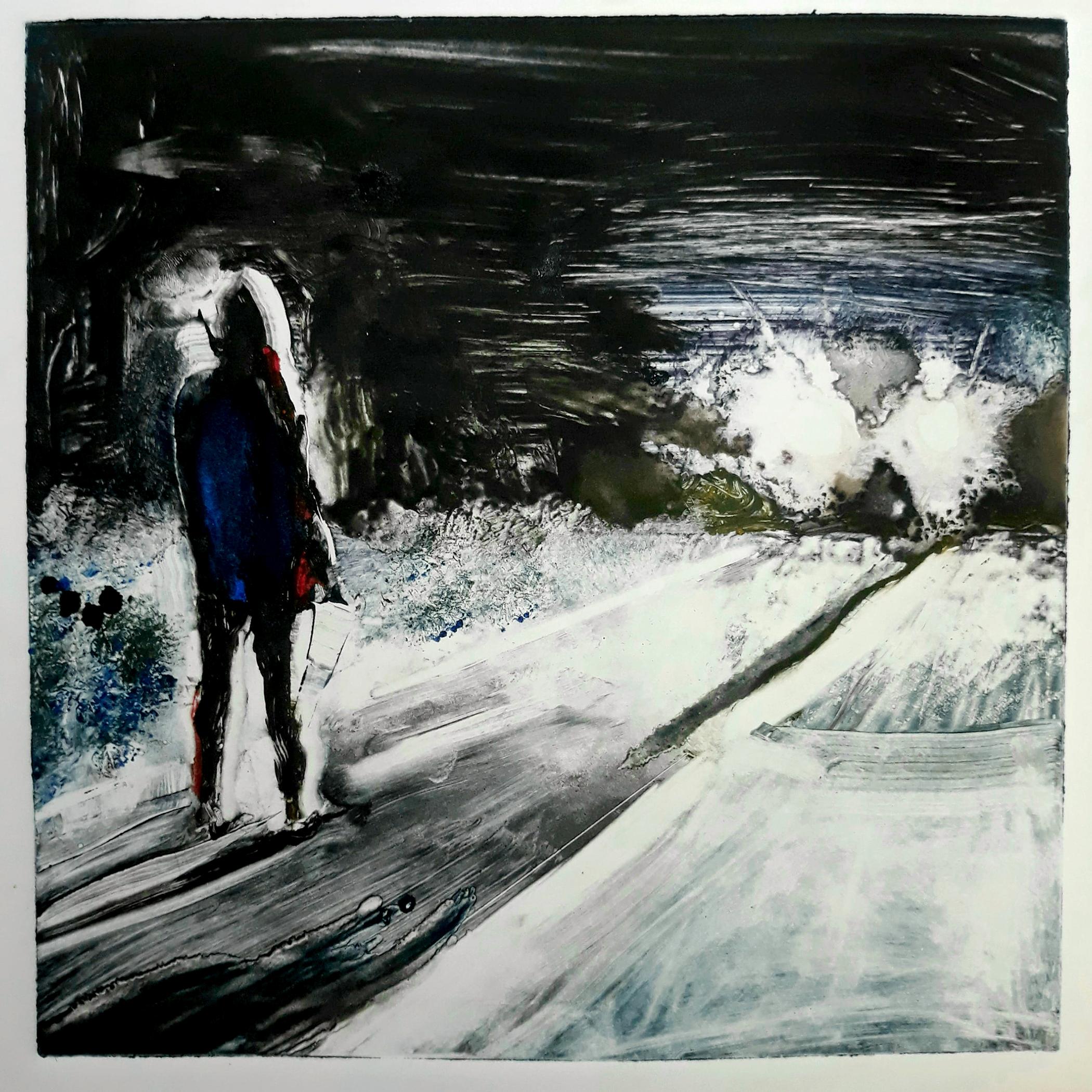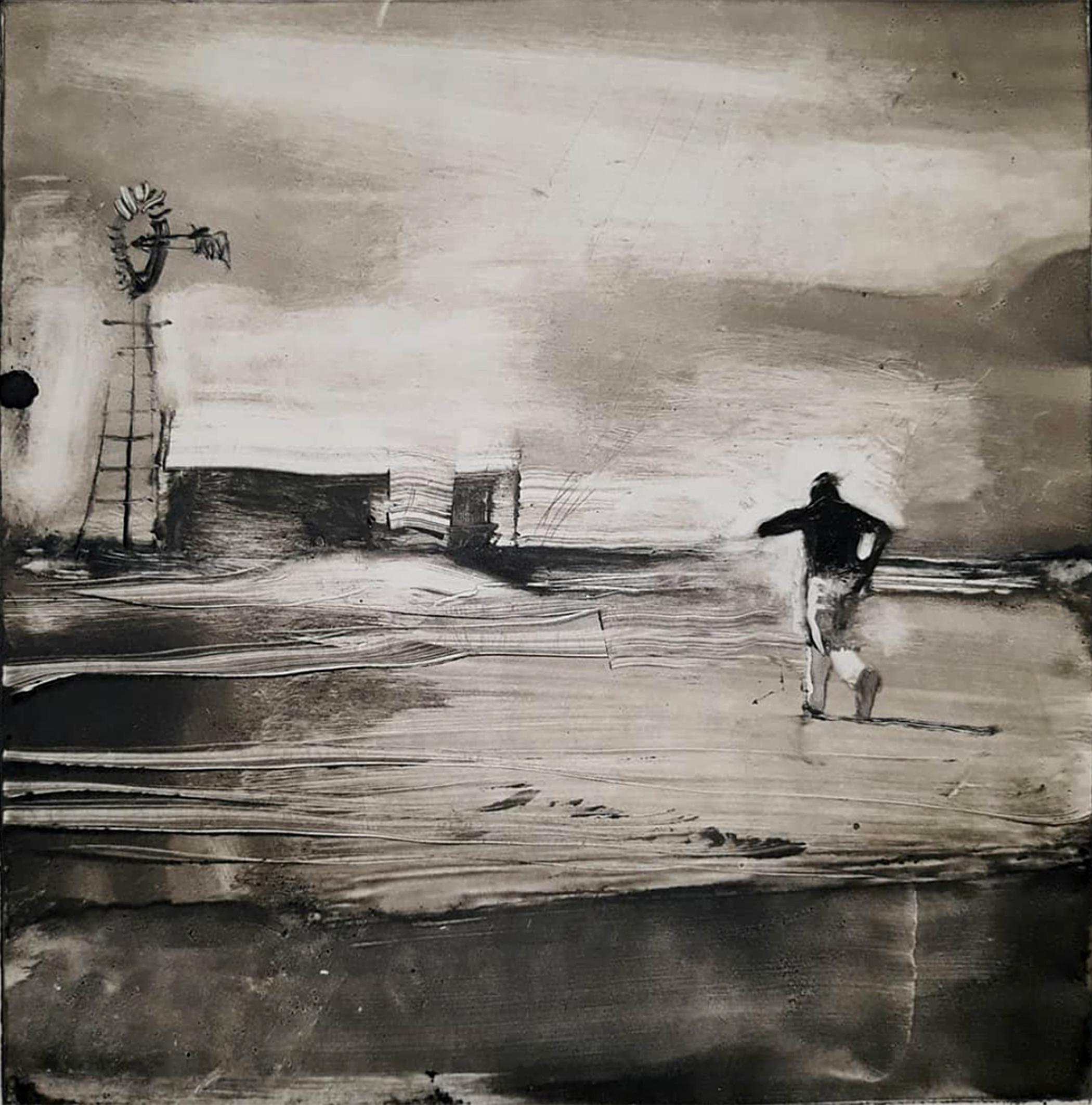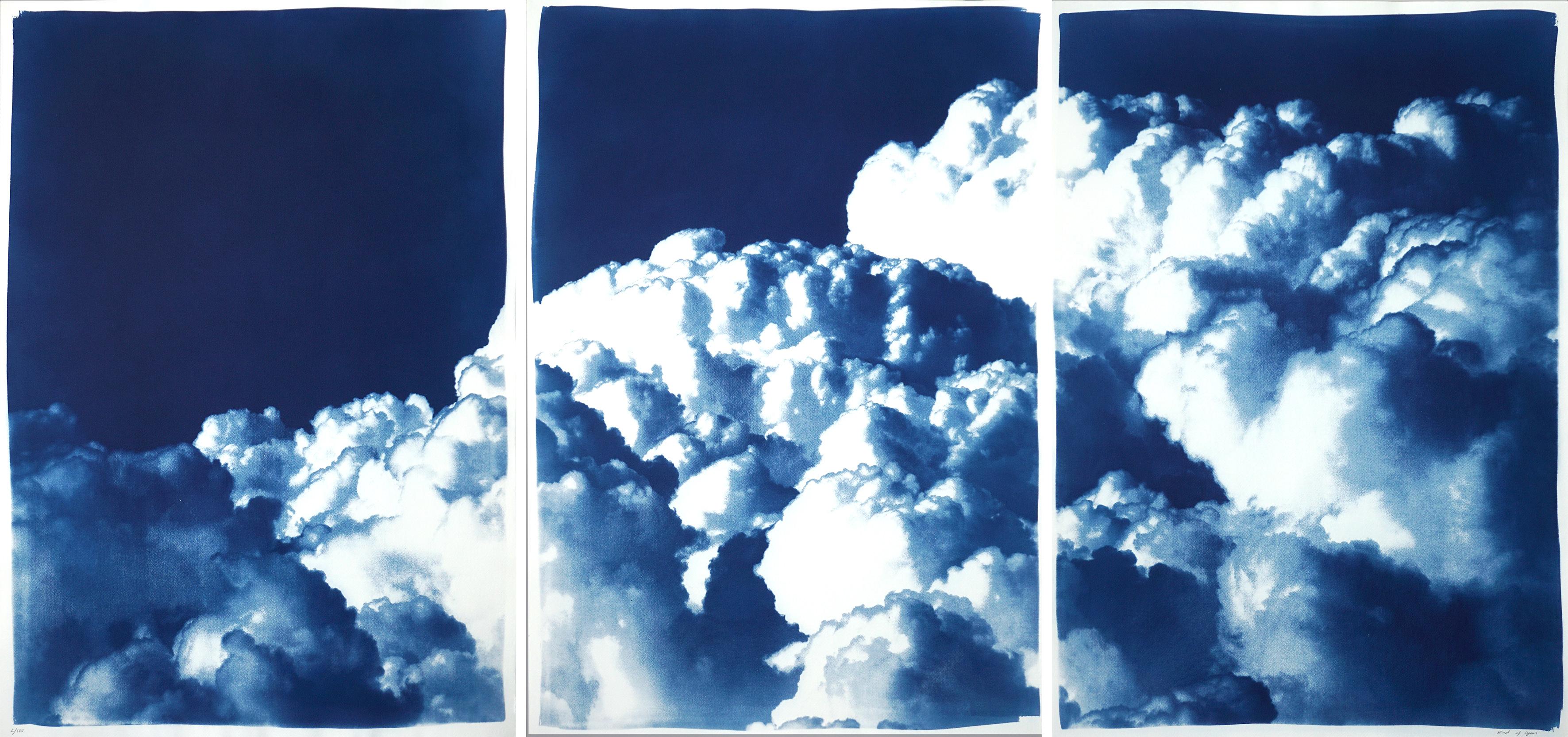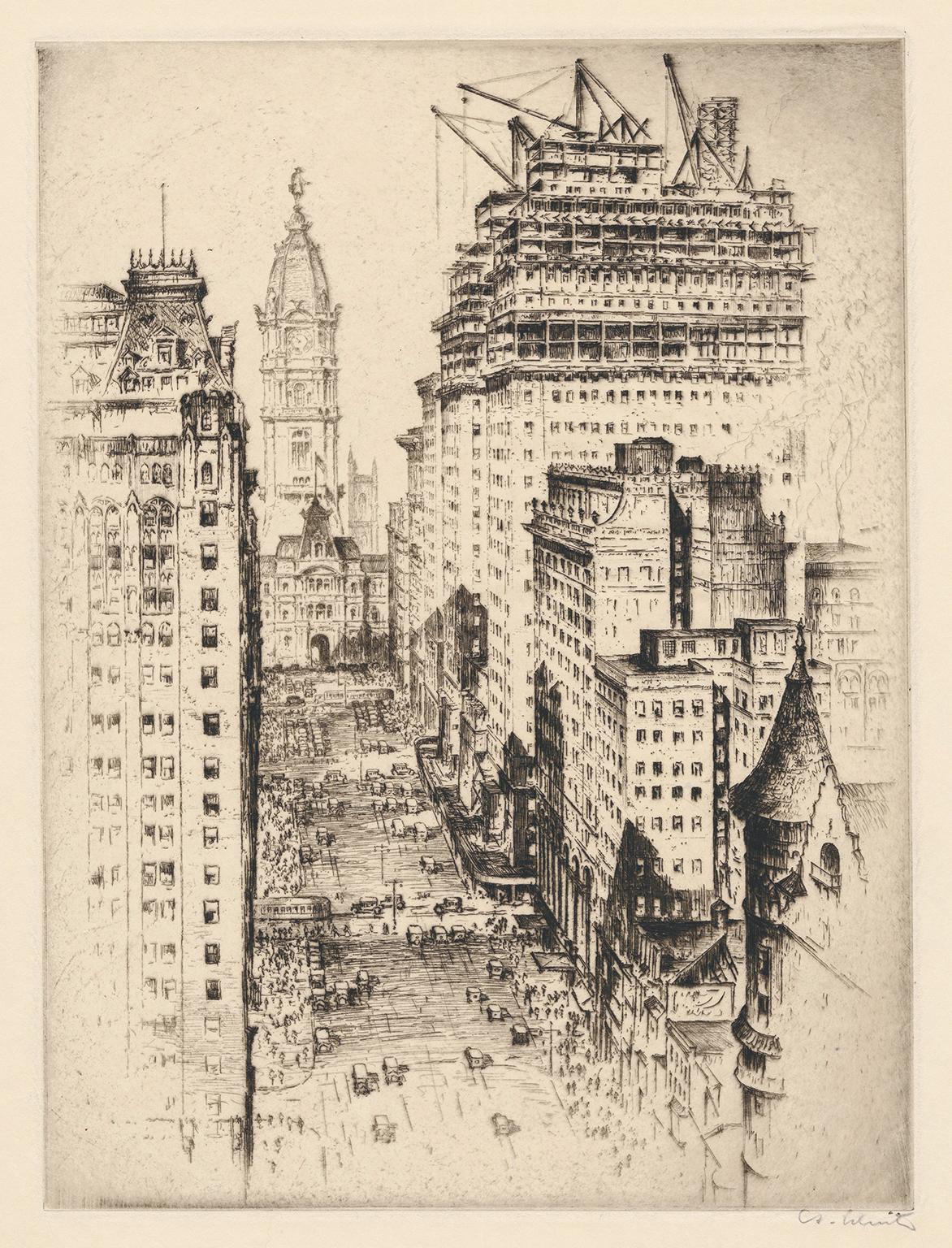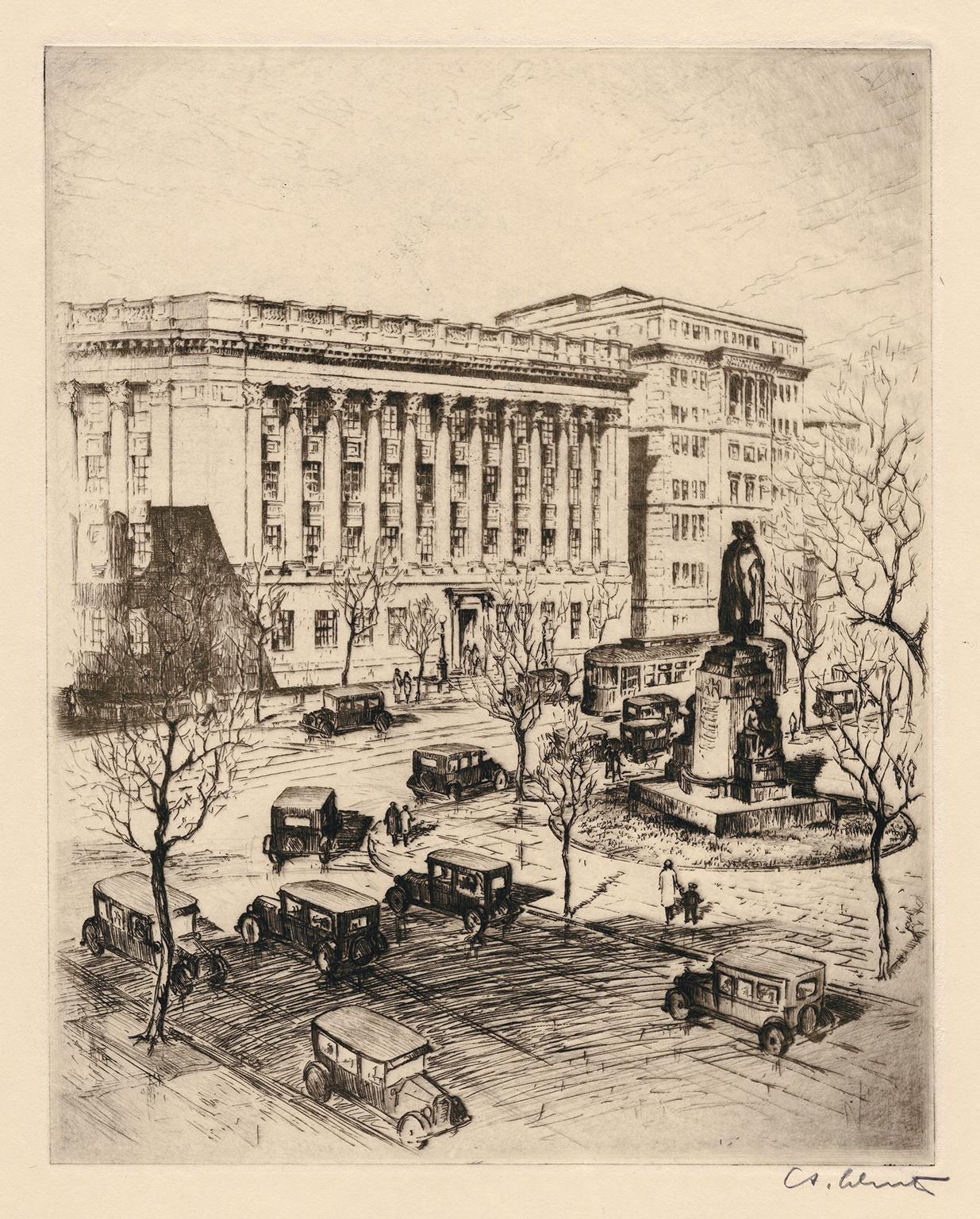Items Similar to Brookside
Want more images or videos?
Request additional images or videos from the seller
1 of 5
Charles Alvah WalkerBrookside1889
1889
About the Item
Signed (at lower right): C A Walker
- Creator:Charles Alvah Walker (1848 - 1925)
- Creation Year:1889
- Dimensions:Height: 24 in (60.96 cm)Width: 9.9 in (25.15 cm)Depth: 1.5 in (3.81 cm)
- Medium:
- Movement & Style:
- Period:
- Condition:
- Gallery Location:New York, NY
- Reference Number:
About the Seller
5.0
Recognized Seller
These prestigious sellers are industry leaders and represent the highest echelon for item quality and design.
Established in 1952
1stDibs seller since 2010
32 sales on 1stDibs
Typical response time: 7 hours
Associations
Art Dealers Association of America
- ShippingRetrieving quote...Ships From: New York, NY
- Return PolicyThis item cannot be returned.
More From This SellerView All
- The Brooklyn BridgeBy Rudolph RuzickaLocated in New York, NYBorn in Bohemia in what is now the Czech Republic, Rudolph Ruzicka emigrated to the United States when he was ten years old. His family settled in Chicago, where Ruzicka worked as a ...Category
20th Century American Realist Landscape Prints
MaterialsEngraving
- Glebe House, MorningBy Randall ExonLocated in New York, NYUnframedCategory
2010s Contemporary Landscape Prints
MaterialsGouache, Monotype
- Strawberries Strewn on a Forest FloorBy William Mason BrownLocated in New York, NYWilliam Mason Brown was born in Troy, New York, where he studied for several years with local artists, including the leading portraitist there, Abel Buel Moore. In 1850, he moved to ...Category
19th Century American Realist Landscape Paintings
MaterialsCanvas, Oil
- Portrait of the Ship ExcelsiorBy Joseph LeeLocated in New York, NYOil and India ink on canvas, 34 1/4 x 54 1/4 in. Signed (at lower right): Joseph Lee Painted about 1876 EX COLL.: Captain Oscar Conrad Kustel (1834–1921), ...Category
Late 19th Century American Realist Landscape Paintings
MaterialsIndia Ink, Oil
- Saint-Malo, BrittanyBy William Stanley HaseltineLocated in New York, NYThe career of William Stanley Haseltine spans the entire second half of the nineteenth century. During these years he witnessed the growth and decline of American landscape painting, the new concept of plein-air painting practiced by the Barbizon artists, and the revolutionary techniques of the French Impressionists, all of which had profound effects on the development of painting in the western world. Haseltine remained open to these new developments, selecting aspects of each and assimilating them into his work. What remained constant was his love of nature and his skill at rendering exactly what he saw. His views, at once precise and poetic, are, in effect, portraits of the many places he visited and the landscapes he loved. Haseltine was born in Philadelphia, the son of a prosperous businessman. In 1850, at the age of fifteen, he began his art studies with Paul Weber, a German artist who had settled in Philadelphia two years earlier. From Weber, Haseltine learned about Romanticism and the meticulous draftsmanship that characterized the German School. At the same time, Haseltine enrolled at the University of Pennsylvania, and took sketching trips around the Pennsylvania countryside, exploring areas along the Delaware and Susquehanna rivers. Following his sophomore year, Haseltine transferred to Harvard University. After graduating from Harvard in 1854, Haseltine returned to Philadelphia and resumed his studies with Weber. Although Weber encouraged Haseltine to continue his training in Europe, the elder Haseltine was reluctant to encourage his son to pursue a career as an artist. During the next year, Haseltine took various sketching trips along the Hudson River and produced a number of pictures, some of which were exhibited at the Pennsylvania Academy of the Fine Arts in the spring of 1855. Ultimately, having convinced his father that he should be allowed to study in Europe, Haseltine accompanied Weber to Düsseldorf. The Düsseldorf Academy was, during the 1850s, at the peak of its popularity among American artists. The Academy’s strict course of study emphasized the importance of accurate draftsmanship and a strong sense of professionalism. Landscape painting was the dominant department at the Düsseldorf Academy during this period, and the most famous landscape painter there was Andreas Achenbach, under whom Haseltine studied. Achenbach’s realistic style stressed close observation of form and detail, and reinforced much of what Haseltine had already learned. His Düsseldorf training remained an important influence on him for the rest of his life. At Düsseldorf, Haseltine became friendly with other American artists studying there, especially Emanuel Leutze, Worthington Whittredge, and Albert Bierstadt. They were constant companions, and in the spring and summer months took sketching trips together. In the summer of 1856 the group took a tour of the Rhine, Ahr, and Nahe valleys, continuing through the Swiss alps and over the Saint Gotthard Pass into northern Italy. The following summer Haseltine, Whittredge, and the painter John Irving returned to Switzerland and Italy, and this time continued on to Rome. Rome was a fertile ground for artists at mid-century. When Haseltine arrived in the fall of 1857, the American sculptors Harriet Hosmer, Chauncey B. Ives, Joseph Mozier, William Henry Rinehart...Category
19th Century American Realist Landscape Paintings
MaterialsCanvas, Oil
- Figure in a LandscapeBy David JohnsonLocated in New York, NYSigned (at lower right): DJ [monogram]; (on back): David Johnson 1865Category
Mid-19th Century American Realist Landscape Paintings
MaterialsOil, Board
You May Also Like
- Unconscious 3By Tom BennettLocated in Brooklyn, NYDramatic imagery from FILM NOIR series of black and white monotypes, blending surrealistic mindscapes with stark realism About Tom Bennett: With quick brushstrokes, Tom Bennett crea...Category
2010s American Realist Landscape Drawings and Watercolors
MaterialsMonotype, Archival Paper
- Dust Bowl, monotype, black and white, wpa styleBy Tom BennettLocated in Brooklyn, NYDramatic imagery from FILM NOIR series of black and white monotypes, blending surrealistic mindscapes with stark realism About Tom Bennett: With quick brushstrokes, Tom Bennett crea...Category
2010s American Realist Landscape Drawings and Watercolors
MaterialsMonotype, Archival Paper
- Multipanel Triptych, Serene Gorgeous Clouds, Handmade Cyanotype, Blue and WhiteBy Kind of CyanLocated in Barcelona, ESThis series of cyanotype triptychs showcases the beauty of nature scenes, including stunning beaches and oceans, as well as the intricate textures of w...Category
2010s American Realist Landscape Paintings
MaterialsPhotographic Film, Photogram, Emulsion, Watercolor, Photographic Paper, ...
- 'Philadelphia, Broad Street' — 1920s RealismBy Anton SchutzLocated in Myrtle Beach, SCAnton Schutz, 'Philadelphia – Broad Street', etching, edition not stated, circa 1927. Signed in pencil. Annotated 'Philadelphia Broad St. Showing City Hall', in another hand, in the ...Category
1920s American Realist Landscape Prints
MaterialsEtching
- 'U.S. Chamber of Commerce' — 1920s Realism, Washington D.C.By Anton SchutzLocated in Myrtle Beach, SCAnton Schutz, 'U.S. Chamber of Commerce', etching, edition not stated, 1928. Signed in pencil. Annotated 'U.S. Chamber of Commerce S/516', in another hand, in the bottom right margin...Category
1920s American Realist Landscape Prints
MaterialsEtching
- 'Cleveland Public Square' — 1920s Urban RealismBy Anton SchutzLocated in Myrtle Beach, SCAnton Schutz, 'Cleveland Public Square', etching, edition not stated, 1927. Signed in pencil. Signed and dated in the plate, lower left. Annotated 'Cleveland Public Square S489', in another hand, in the bottom right margin. A fine, richly-inked impression, in brown/black ink, with skillfully-controlled plate tone, on cream wove Japan paper; the full sheet with margins (1 5/8 to 3 inches), in excellent condition. Archivally sleeved, unmatted. Image size 11 7/8 x 8 7/8 inches; sheet size 17 1/4 x 12 1/8 inches. ABOUT THIS IMAGE 'Public Square' is the two-block (formerly four-block) central plaza of downtown Cleveland, Ohio. Based on an 18th-century New England model, it was part of the original 1796 town plan overseen by Moses Cleveland and remains today as an integral part of the city's center. The 10-acre (4.0 ha) square is centered on the former intersection of Superior Avenue and Ontario Street.[2] Cleveland's three tallest buildings, Key Tower, 200 Public Square, and the Terminal Tower, face the square. Public Square was part of the Connecticut Land Company's original plan for the city, overseen by Moses Cleveland in the 1790s. The square is signature of the layout for early New England towns, which Cleveland was modeled after. While it initially served as a common pasture for settlers' animals, less than a century later in 1879 Public Square became the first street in the world to be lit with electric street lights—arc lamps designed by Cleveland native Charles F. Brush. The square was added to the National Register of Historic Places on December 18, 1975. Public Square is often the site of political rallies and civic functions, including a free annual Independence Day concert by the Cleveland Orchestra...Category
1920s American Realist Landscape Prints
MaterialsEtching
Recently Viewed
View AllMore Ways To Browse
Peter Max Mini
Pierre Doutreleau
Pierre Maulin
Poster Combloux
Rembrandt V R
Rene Eugene Lairy
Retired Tiffany China Patterns
Retro Breckenridge Ski Posters
Richard Estes On Sale
Robert Burkert
Roi Partridge Etchings
Ross Pittman
Roy Lichtenstein Moonscape
Roy Lichtenstein Signed I Love Liberty
Roy Lichtenstein Sunrise
Rudolf Lesch
Ruth Chaney On Sale
Sara Graham
